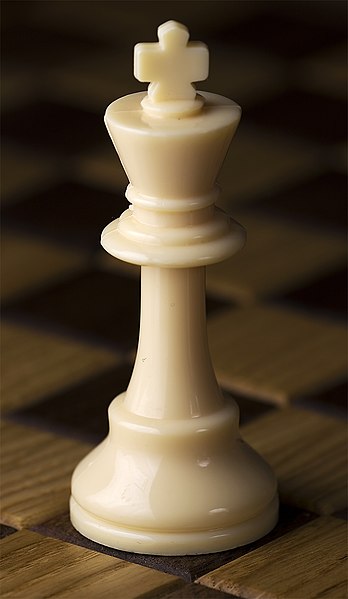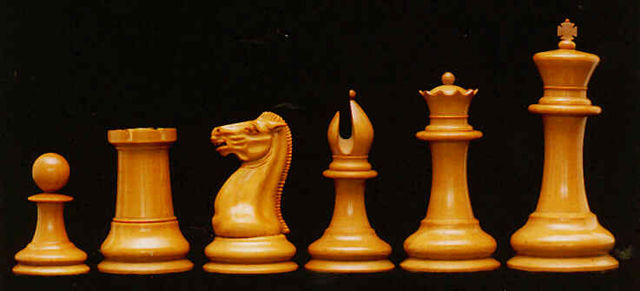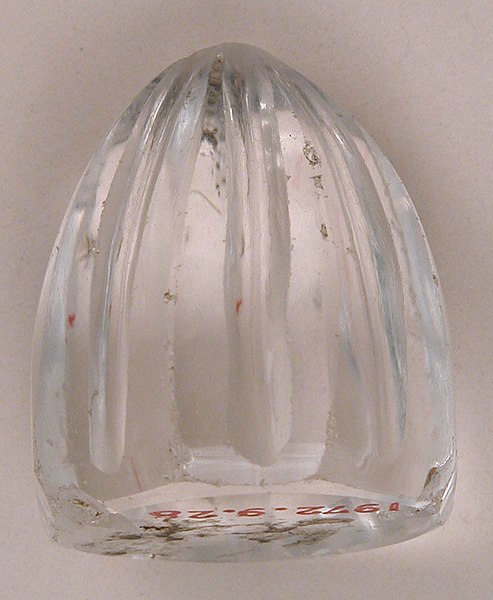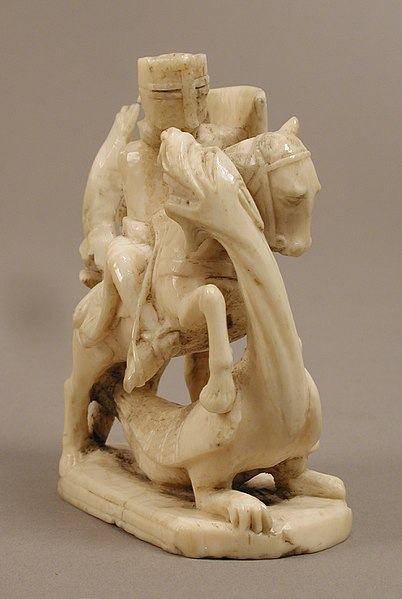The king is the most important piece in the game of chess. It may move to any adjoining square; it may also perform, in tandem with the rook, a special move called castling. If a player's king is threatened with capture, it is said to be in check, and the player must remove the threat of capture immediately. If this cannot be done, the king is said to be in checkmate, resulting in a loss for that player. A player cannot make any move that places their own king in check. Despite this, the king can become a strong offensive piece in the endgame or, rarely, the middlegame.
White king
Black king
The Indian chess King represented here by the Maharaja seated upon a tall Elephant in a Howdah
A chess piece, or chessman, is a game piece that is placed on a chessboard to play the game of chess. It can be either white or black, and it can be one of six types: king, queen, rook, bishop, knight, or pawn.
Polish Węgiel pieces
Original Staunton chess pieces Left to right: pawn, rook, knight, bishop, queen, king
A pawn of quartz from 10th–11th century (Fatimid Egypt?). Islamic chess sets favored abstract designs.
A knight made around 1250 in London, England. The knight is battling an evil dragon.







